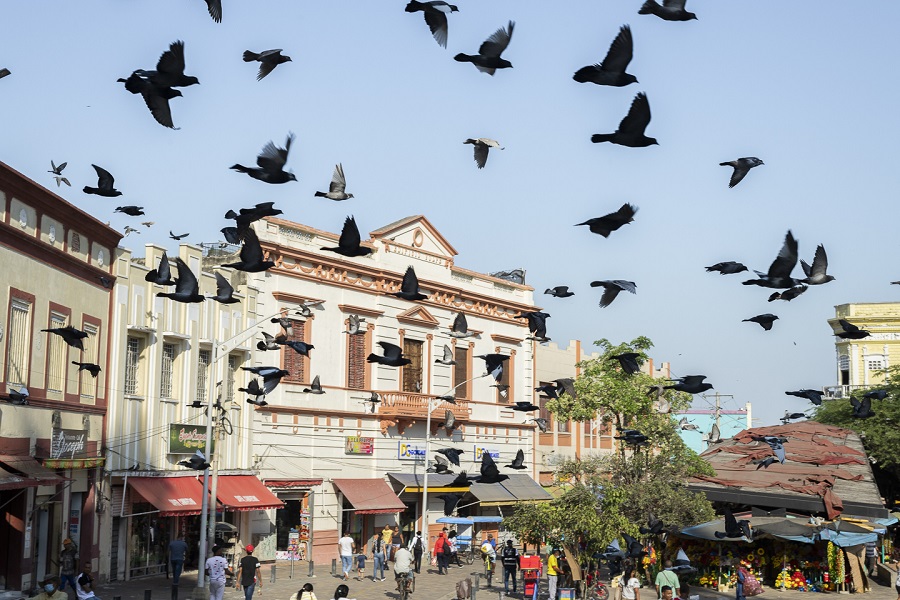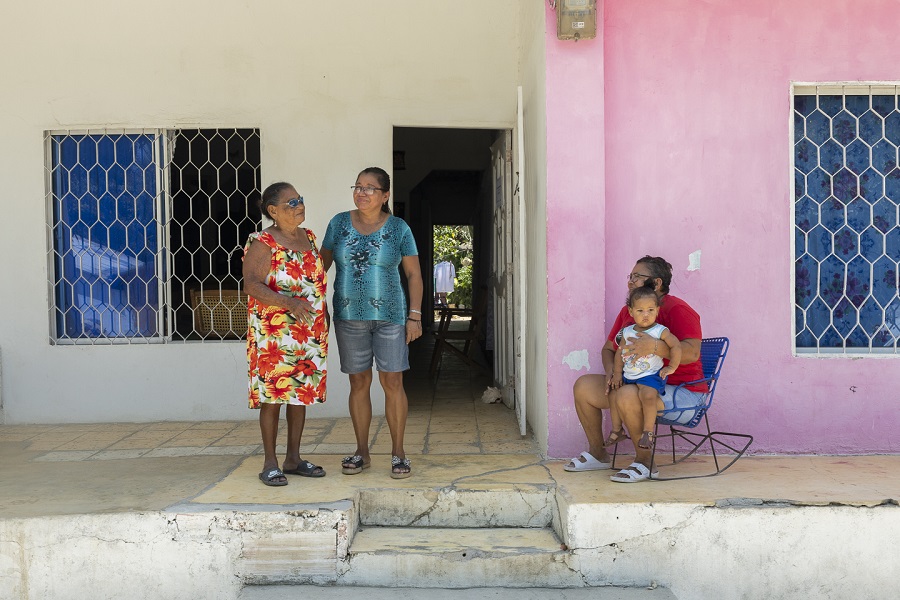
Mangroves and marshlands: Barranquilla embraces biodiversity
Barranquilla, the Golden Gate of Colombia, lies about 24 kilometres upstream from the mouth of the 1528 km long Magdalena River on the Caribbean coast. The city is to become Colombia's first BiodiverCity.
Location is key! This is true not only in residential buying, but also when planning a city. The Spanish already recognised this: Barranquilla was an important gateway for bringing goods from Europe to the interior of the country, and vice versa. Although there have been some economic ups and downs, it is largely the favourable location that has made the city, which today has 1.3 million inhabitants, an important industrial and commercial centre.
Colombia's fourth-largest city, including the metropolitan area, currently generates 27 percent of the GDP of the coastal region and wants to expand this position further. The rapid growth of the city, in addition to shipping and sewage disposal, have damaged the biodiversity in the river delta and threatens habitats for fish and caimans (South American reptiles). Barranquilla now wants to reverse this trend and become Colombia's first BiodiverCity: a city that develops in harmony with its surrounding nature and ecosystems.
Vibrant city centre …
In the city centre, Barranquilla looks like a normal Latin American city. It smells of the small cookshops on the street corners – and a little of exhaust fumes, too. The air is definitely warmer and the background noise is louder than in a city in Northern Europe.


In the north-east of the city, not too far from the centre, lies part of the large marshlands and mangrove forests, the Ciénaga Mallorquìn – a special place. A project to renature the area has been completed and the marshlands are a favourite place for locals and visitors alike. The wetlands not only provide sanctuary and nesting grounds for numerous animal species, they are also important for the people who earn a living from fishing. Furthermore, the wetlands offer the city natural protection against floods and extreme weather events.
Mangroves are powerful CO2 reservoirs
Mangrove forests are particularly productive ecosystems and absorb on average three to five times more CO2 than conventional forests. In other words, a 10-kilometre mangrove area can store the same amount of CO2 as a 50-kilometre section of forest in the tropics.
Attract business, strengthen exports

The city is also keen to strengthen its economy and is currently expanding the port with two new deep-water accesses to grow its export capacity. As of today, Colombia still has the lowest export rate in South America. Barranquilla wants to change that by building a golden bridge to the US, in particular.
Tourism, too, is an important sector: major events such as the Pan-American Games 2027 and, of course, the world-famous Carnival de Barranquilla, should attract guests from home and abroad. More than half a million out-of-town visitors returned for the carnival in 2022.
Striking the balance between economic upswing and nature conservation

For Jaime Pumarejo, Mayor of Barranquilla, economic upswing and nature conservation are two sides of the same coin – even if Barranquilla's path to becoming a sustainable and green city is not a short one. The long-term development plan stretches all the way to the end of this century and includes clearly defined intermediate-term goals. The protection of biodiversity is an important pillar in the overall plan and has the support from the highest political level, explains Pumarejo.
After Brazil, Colombia is one of the most biodiverse countries in the world. This is why President Iván Duque Márquez collaborated with the World Economic Forum and the Alexander von Humboldt Institute to launch the BiodiverCities by 2030 initiative in 2020. Barranquilla is to serve as a model. According to Finance Secretary Gustavo Rochas, a total of 18.7 trillion Colombian pesos (approx. 4.4 billion Euros) will be invested in sustainable urban development by the end of 2023.

The importance of citizen dialogue
While Mayor Jaime Pumarejo is the face of the city to the outside world and Gustavo Rochas has an eye on the finances, Carlos Acosta is something like the city's top manager. He received his degree in electronic engineering from the school of Engeneering and Applied Sciences of Columbia University in New York.
If we don’t do it with the people, it won’t be done
Developing a city for and with citizens
Acosta knows almost every project by heart. When we meet him, he speaks fast and enthusiastic, he brings in a lot of detail but does not lose sight of the overall picture. "In preparing the development plan for Barranquilla, we consulted established consultancies and start-ups alike," he explains. One key finding: a city cannot be changed without broad citizen participation. "We held more than 1,000 citizen dialogues, especially on housing – here we asked people exactly what they needed."

Instead of rentals, there is a high ownership rate to strengthen the sense of responsibility. Even with a low monthly income of the equivalent of 30 US dollars, people in Barranquilla can apply for state subsidies and become homeowners.

"El Gran Malecón" was the starting signal for the BiodiverCity even before the renaturation of the marshes: on a section of five kilometres, the riverbank was first made accessible, then greened. In the meantime, locals and guests can exercise here, picnic, or attend concerts and events.

A special feature is the many eco parks that have been created in recent years: a mixture of green area and sports field. A few years ago, the proportion of green spaces per inhabitant was 0.8 square metres – today it is already 4 square metres, Acosta emphasised. By the end of 2022, the city is planning a total of 1300 hectares of new eco parks.

For Barranquilla-born Lina Margaríta Macias, a journalist at the radio station of Universidad del Norte, the redesign and revitalisation of the public spaces has contributed a lot to the quality of life in Barranquilla.
El Gran Malecón is great – you can meet friends here, do sports.
In the future, she would like to see the local art scene becoming more prominent in the city.

Natalia Sguerra, too, is always surprised by the city's developments during her visits. She is a native of Colombia, but has worked for Deutsche Bank in investment banking, covering the city of Barranquilla from New York.
I am very proud that Deutsche Bank was the first global private lender to finance important sustainable projects in the city, including housing projects, the development of the mangroves and the expansion of the bicycle path network.
In this way, the bank has opened the doors to other Wall Street institutions, to banks and fund providers. Public-private partnerships play an important role in the city's financing plan. The bank's intensive relations with the city have aroused the curiosity of other institutions and strengthened confidence in Barranquilla's creditworthiness.
And what’s next on the agenda?
Carlos Acosta doesn’t need long to answer: "The expansion of renewable energies!" Here, too, the location plays into the city's hands: in cooperation with a Danish company, the first offshore wind farm is to be built off the coast. By 2030, at least 50 percent of the energy demand is to be generated from renewable sources. And private households are also to be equipped with solar roofs. The sun shines a lot in Colombia.
Photographs by Jörg Brüggemann, OSTKREUZ Agentur der Fotografen

Sonja Dammann
… grew up in Twistringen, Lower Saxony, Germany. This is one of the reasons why she finds big cities so attractive. It's never boring and something crazy and unexpected is already around the corner! Since cities are places in which creativity, science and entrepreneurship easily come together, she is confident that good ideas for combating the climate crisis will emerge here in particular.
Recommended content
Responsible Growth | Opinion
“The question is whether many cities will be habitable” “The question is whether many cities will be habitable”
Rising sea levels could impact the lives of millions. Can investors help to avert disaster? Markus Müller from the Chief Investment Office shares insight.
Responsible Growth | Video Story
The power of sustainability in the palm of your hands Smart lighting for the city of the future
Imagine controlling your city’s street lighting from an app on your smartphone. The people of Bad Hersfeld are getting that opportunity.
Responsible Growth | Photo Story
Barrio del Aeropuerto – from ugly duckling to beautiful swan Towards net zero: the Madrid way
Improving the existing building stock has a huge impact on getting the Spanish capital towards net zero – as the Barrio del Aeropuerto project shows.






